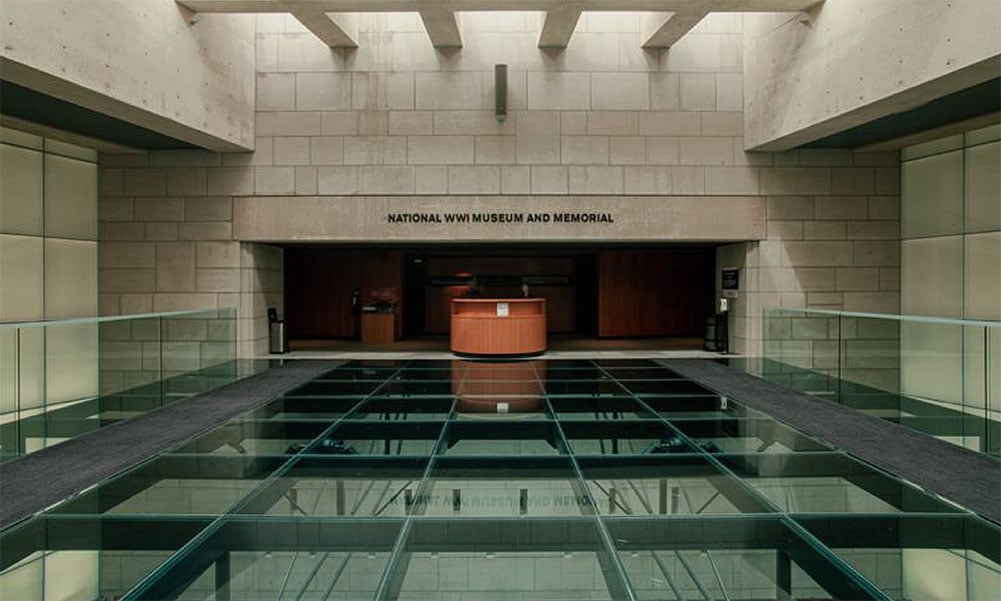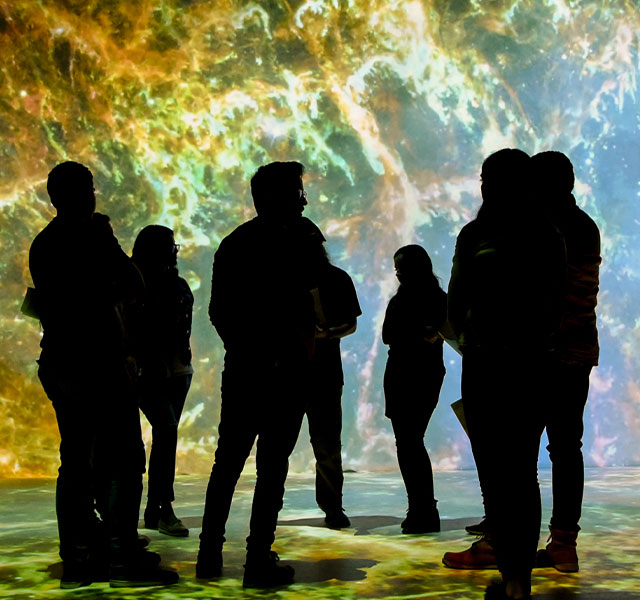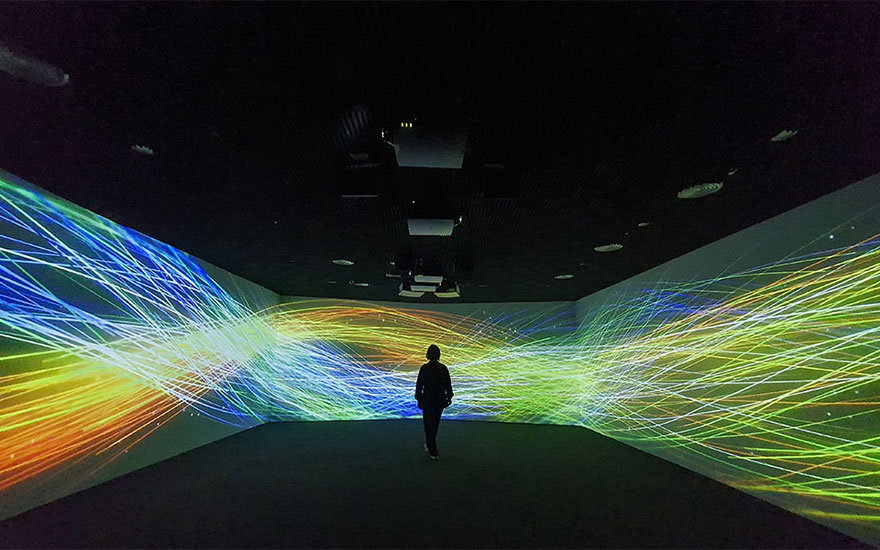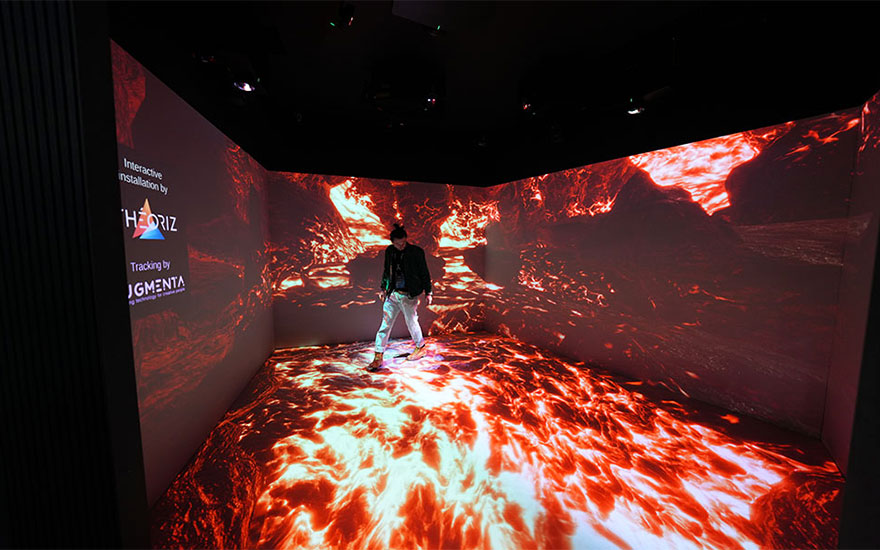A suite of AV tech helps introduce and connect visitors to the experience of the Great War
Since its opening in 2006, the National WWI Museum and Memorial has welcomed over two million visitors. Dedicated to remembering, interpreting, and understanding the Great War and its enduring impact on the global community, the 80,000 square foot space features exhibitions, materials, and provides educational programs that reflect its mission.
Watch the video
In 2022, the museum embarked on a technological refresh in collaboration with Electrosonic, an AV and technology services company and Christie partner. We had a chance to learn more about the museum and how the new and refreshed spaces introduce and connect visitors to the experience of the Great War.
“Encounters”
“Electrosonic has a history of working on complex projects. It's how we got our start, and it's how we are doing the projects today. It’s always been our expertise to take complex project concepts and turn them into reality,” says Chris Conte, executive consultant and global ambassador at Electrosonic.
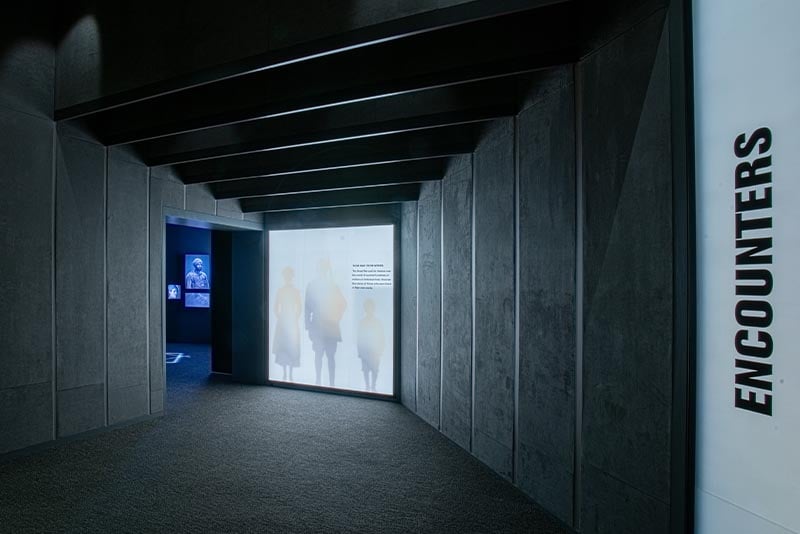
“Encounters” is an innovative new exhibit that marries advanced AV technology with historic diaries, letters, and photos.
And that’s exactly what “Encounters” achieves through a unique blend of old and new: advanced AV technology combines with historic diaries, letters, and photos to tell the stories of 16 characters. Visitors experience these personal stories in four alcoves, with interactive experiences in each.
Alyssa Giacomucci, senior project manager, Electrosonic, explains that interactivity is triggered in each alcove by stepping onto an illuminated diamond. “We have two sensors above you that we affectionately call a sound cloud. One is for motion, and one is for presence, so it will sense any new motion as you enter the diamond, and it will also sense your continued presence should you continue to stay story to story,” explains Alyssa. When the interactivity is triggered, a character appears on an LED display in the alcove.
As the character approaches the screen, LED light strips positioned to the side begin to flash, creating a life-like shadow effect. Once the character enters the frame, a Christie DWU960-iS Inspire Series projector creates a forward shadow, transforming a 2D LED screen into a 3D portal effect as if visitors are looking back into a window of history. A HOLOPLOT sound system creates an Acoustic Sound Field to create precise sound beams to complete the experience.
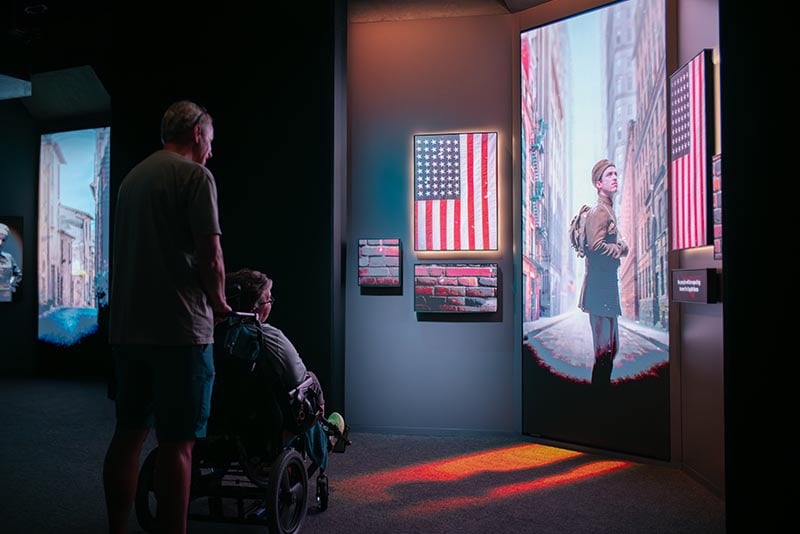
In “Encounters”, Electrosonic used Inspire Series projectors to create a shadow effect in front of the display.
“We used Christie [projectors] in ‘Encounters’, and that's really special because you don't know they’re there. They're well hidden, and they produce the effect that blows most people’s minds,” says Chris Wyche, VP of facilities, National World War I Museum & Monument.
The DWU960-iS features 9,600 lumens and a 1.25-2.0:1 fixed zoom lens. With 20,000 hours of virtually maintenance-free operation, the DWU960-iS offers a low total cost of ownership for mid-sized environments.
Electrosonic’s Chris Johnson explains that “Christie was chosen because they had a great product line, robust lensing…and they also helped quite a bit with the mockup phase, which is integral to completion.”
Kemper Horizons Theater
“We don't just ask how big of a screen size or what kind of audio system you want. Those are the wrong questions to ask. The right question is, ‘What do you want the guests to feel when they walk into a space?’” explains Chris Conte. “And that helps us define technology that delivers on a creative rather than just display what the message is.”
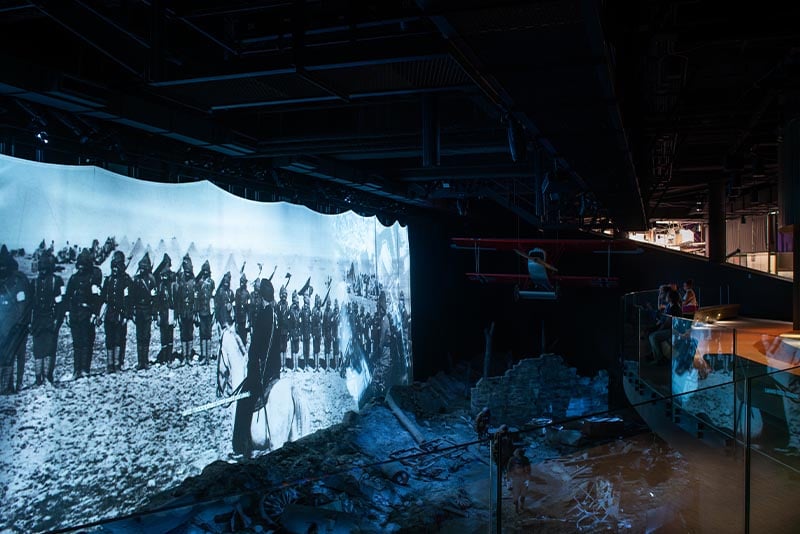
Electrosonic selected our Jazz Series projectors to illuminate the screen in the Kemper Horizons Theater.
This approach is exemplified throughout the museum, including the Kemper Horizons Theater. Two Christie DWU1800-JS 1DLP laser projectors light up a towering steel and brick wall with footage from the Great War. In front, a dynamic physical set brings the conditions of trench warfare to life as lightning flashes over the scene.
“Battlescapes”
The “Battlescapes” exhibit transports guests into a crater at the heart of the battlefield. Five Christie DWU1400A-GS 1DLP laser projectors showcase discreet imagery of the chaos and devastation of the war from the perspective of a soldier. Heavy artillery pounds the landscape, explosions ripple through the trenches, and the soldiers run to take cover as the bullets from gunshots surround them.
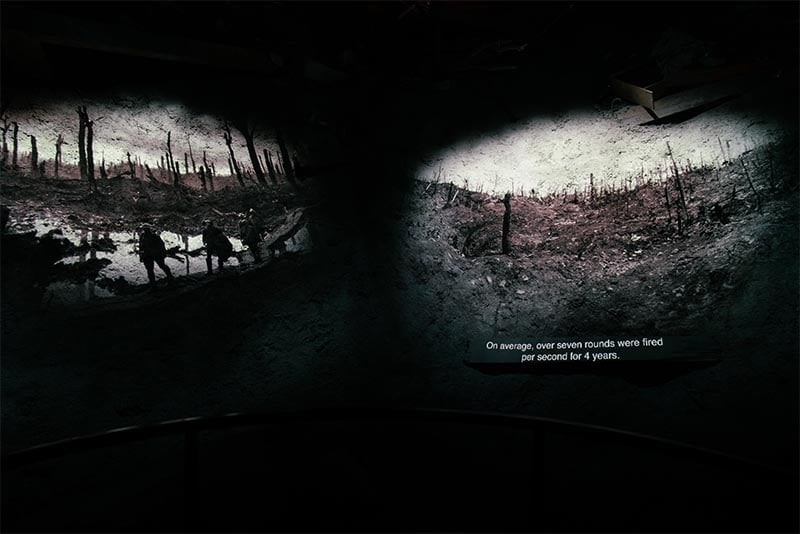
Projected images in “Battlescapes” show the chaos and devastation of the war from the perspective of a soldier.
While the cratered surface in “Battlescapes” creates a dynamic backdrop for the videos and imagery, it posed a challenge: subtitles projected onto the wall were unreadable. But Electrosonic found a simple fix: a slab of wood. By mounting it strategically, it created a smooth surface for clear subtitles. This improvised solution ensures every visitor can fully experience the story of the Great War.
Bringing stories to life
“We all have different expectations when we walk into museums today,” explains Chris Warren, curator, National WWI Museum and Memorial. “AV is a great component partnered with [the] artifacts that we have in our collection. It brings stories alive; it brings more diverse sets of stories. AV is not a replacement, it's a partner. And really being able to use that to tell stories, to delve into that history and bring it alive for the public is a great opportunity. It’s something we have to do for the National War Museum.”
“I think one of the powerful things about the Museum and Memorial, and especially our main gallery, is how technology folds into the background but absolutely supports the storytelling that we do here,” says National WWI Museum and Memorial President and CEO, Matthew Naylor.
